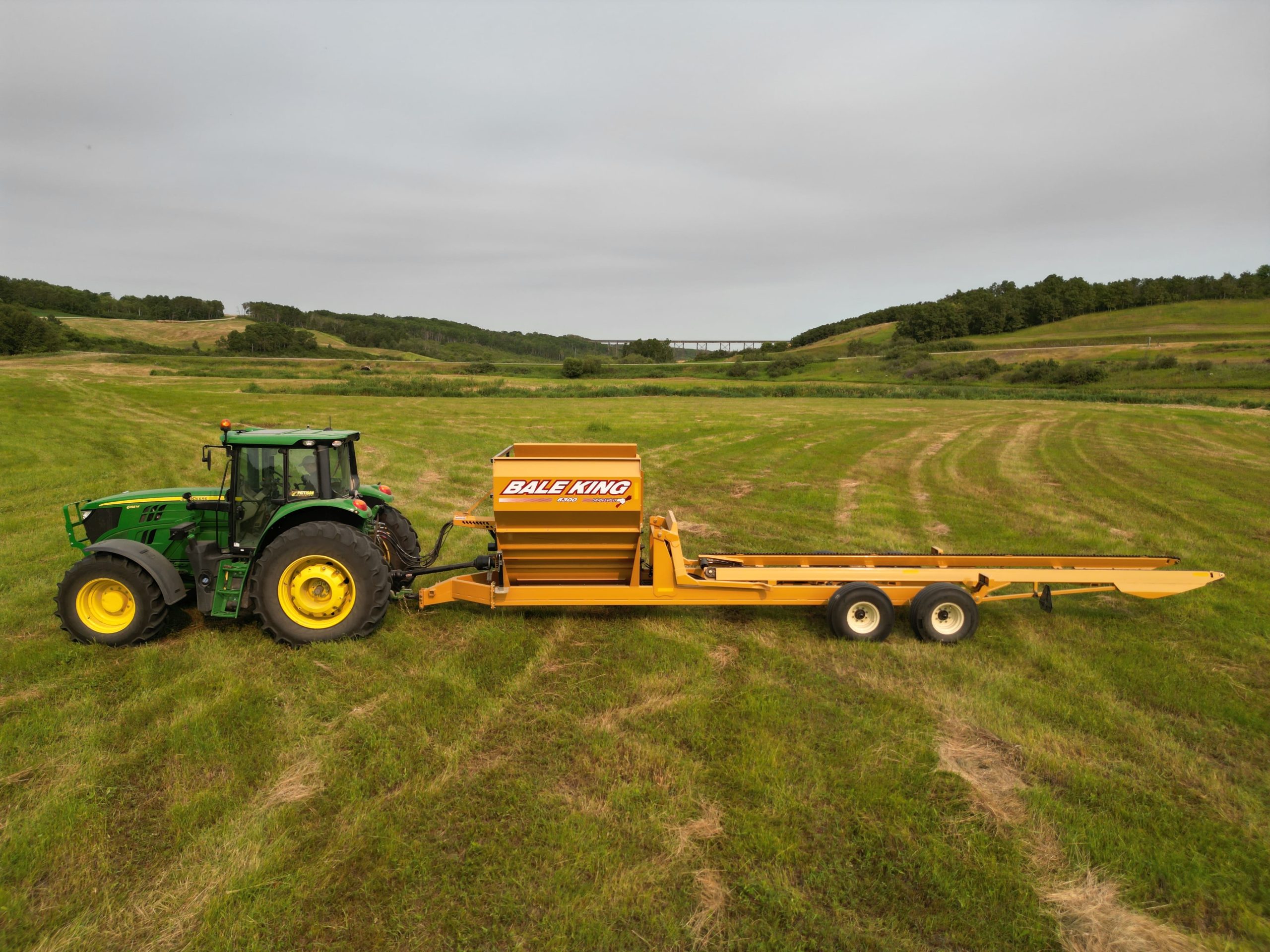- Call Us 1 306-745-2711

Comparing Bale Processors: Find the Best Bale Processor for Your Operation
When it comes to feeding or bedding livestock, one of the most important pieces of equipment you’ll likely invest in is a bale processor. The best bale processor for your operation is one that matches your needs while fitting into your budget.
Bale processors can help increase efficiency, reduce waste, improve animal nutrition and comfort, and pay off year after year. But not all bale processors are created equal. At Bridgeview Manufacturing, we carry a solid line of Bale King processors—each with different strengths and benefits. Let’s compare them so you can pick the one that fits your needs.
Why the Right Bale Processor Matters
Before jumping into models, there are a few key features and performance attributes to consider:
- Bale Capacity: Your bale capacity will impact your throughput, labour, and fuel efficiency.
- Bale Type Compatibility: Does your operation run round bales or large square ones? If the answer is both, consider how easily you need to be able to switch between the two types and your size requirements.
- Power Needs (HP, PTO speed): Ensure your tractor or power unit is compatible with the bale processor you choose.
- Tub/Rotor Design: Consider how the bale is fed and processed (rollers, flails, rotor design), as well as ease of twine removal and maintenance.
- Discharge Control and Distance: Determine the required distance for disposing of processed material (for windrows, bunks, bedding).
- Durability, Maintenance, and Features: Consider additional features such as deflector chutes, adjustability, safety features, flotation tires, etc.
- Sizing and Maneuverability: Transport width, weight, and how it fits through gates or around your barns are essential when it comes to maneuvering your bale processor.
Our Bale King Line-Up: How They Compare
Bridgeview’s Bale King bale processor line includes models with varying bale capacities, features, and special strengths. Below, we’ll break down factors to consider when choosing the best bale processor for your operation.
| Decision Factor | What to Consider | Which Model Typically Lines Up Best |
|---|---|---|
| Throughput and Bale Volume Required | How many bales per feeding or bedding event? How often per day do you need to run this tool? |
For many bales with long distance hauls, choose the 6300. For short runs, the 5400 or 7450 in two or three bale configurations. |
| Bale Types and Conditions | Mostly round bales or squares or mixed? Tough bales such as low core, frozen, net or twine? |
For square bales or mixed square and round, the 8300 is the tool of choice. For round bales, other Bale King models are strong candidates. |
| Total Ration Mixes | Do you need to supplement feed with grain, pellets or cubes? | The 5325 includes a 100 bushel grain tank for high grain volumes. The 5400 and 6300 can add a side mounted 40 bushel tank. |
| Power, Tractor and Hydraulics Available | Tractor horsepower, weight, PTO speed, hydraulic remotes, and transport limits. | All processors need strong PTO and remotes. The 6300 and 5325 need more tractor weight. A typical 100 hp chore tractor is adequate for standard models. |
| Discharge Distance and Feeding Layout | Required throw distance for windrows, bunks or bedding. Do you feed or bed in varying layouts? |
All models have hydraulic deflectors. The 5400, 6300 and 8300 reach up to 60 ft with open discharge design. |
| Budget versus Return on Investment | Up front cost, operating costs, time saved, feed wastage saved, and labour savings. | If you can amortize a higher cost, the 6300 can save more over time for big open range feeding. For mixed pasture and corral operations, the 5400 or 7450 may deliver ROI sooner. |
| Maintenance and Longevity | Ease of twine or net removal, durability of feed path, parts wear, simplicity. | The 5400 and 6300 emphasize simplicity with few moving parts. The 7450 chain and slat offers easy operation and simple twine removal, with more moving parts in the feed system. |
The Final Decision: Which Bale Processor is the Best Fit for Your Operation
To help you make your final decision, here are some quick recommendations:
- If you process round bales in a mix of pasture and barnyard/feedlot pens, the 5400 is a “sweet spot” for your needs. It offers increased capacity, manageable power needs, and the potential for future upgrades.
- If you’re looking for the best rotor access for easiest twine removal, the 7450 chain and slat style processor is your machine.
- If mixed bale types are common in your area, or you expect to shift between square and round bales, and want that flexibility in one machine, the Bale King 8300 is likely the best bale processor for you. Even though it may cost more up front, it reduces the need for multiple machines and gives operational flexibility.
- If your operation is very large and you feed in wide open pastures (many animals, frequent bedding, high throughput, long distance), then a higher capacity 6300 model may be worth the investment.
Also, sometimes scaling gradually (buying a model with upgrade potential) is the best decision, beginning with a 2-bale unit that can be upgraded later when demand increases.
Bridgeview Manufacturing: Delivering Innovative Agricultural Solutions for Over 35 Years
Choosing the best bale processor is about more than just picking the biggest capacity or lowest price. It’s about matching bale type, power, feeding and bedding style, and long-term flexibility to your operational needs.
Bridgeview’s Bale King line gives farm owners a solid selection of equipment to meet all levels of requirements. If you’re still wondering which bale processor is the best to suit your needs, contact Bridgeview Manufacturing today. We’ll walk you through every step of the process to ensure you get the top-quality machinery and after-sales support you need.
